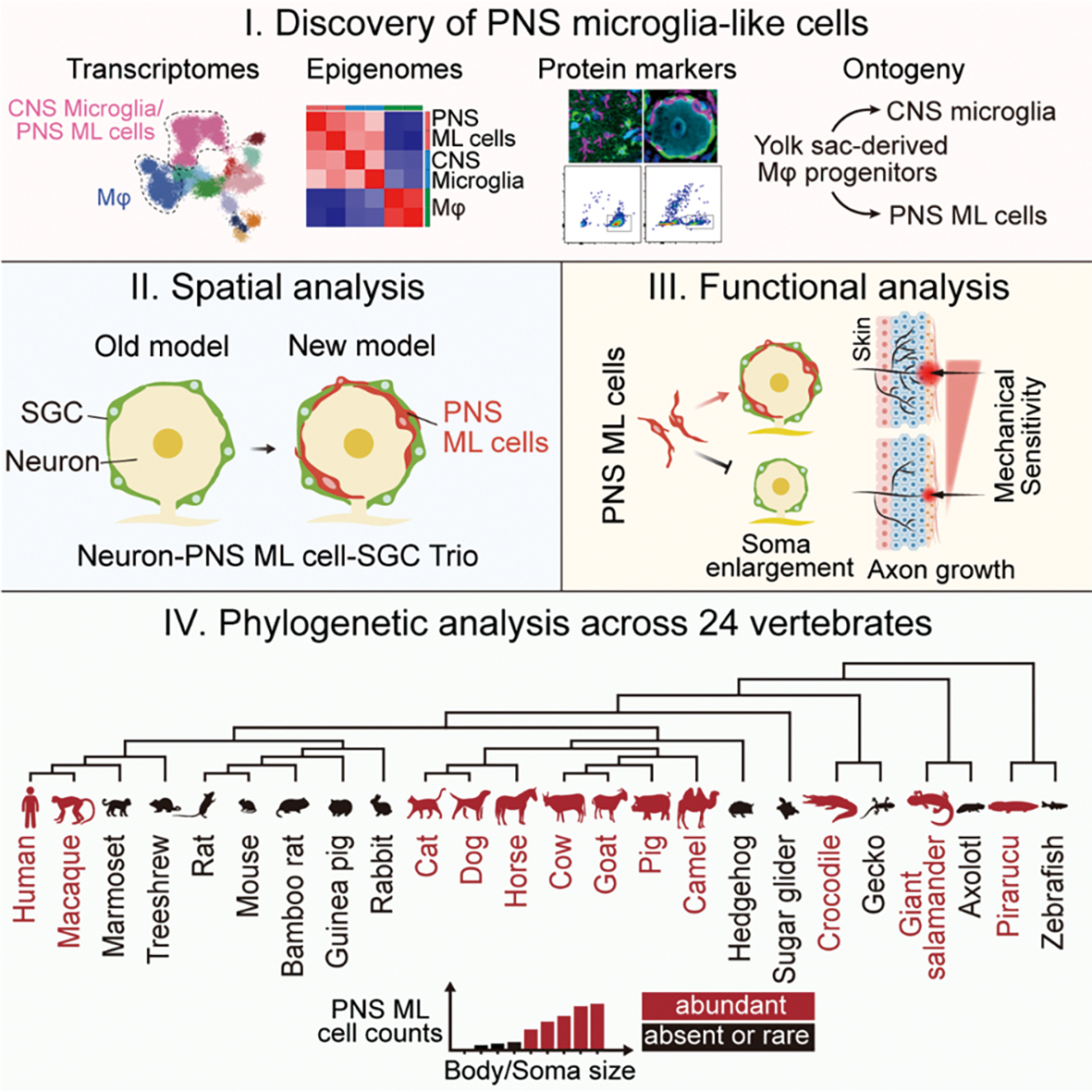Microglia—long considered exclusive to the central nervous system—have now been found patrolling the body’s peripheral nerves. A team led by Prof. LI Hanjie from the Shenzhen Institutes of Advanced Technology (SIAT), Chinese Academy of Sciences, revealed these immune cells not only exist in the human peripheral nervous system (PNS) but also regulate neuronal size across species. Published in Cell on April 7, the study combines single-cell transcriptomics and cross-species analysis to redefine our understanding of neural architecture.
The researchers discovered that PNS microglia share molecular signatures with their CNS counterparts—challenging decades-old assumptions based on rodent models. These cells form a novel trio with neurons and satellite glial cells in peripheral ganglia, replacing the traditional neuron-glia duo model. This structural shift suggests microglia enable rapid responses to neuronal activity changes under both health and disease. Notably, microglia abundance correlates with species’ body size and sensory neuron dimensions. Larger animals—like pigs and primates—host more microglia, while smaller species show fewer or none. For example, mice lack them entirely—that is why scientists missed this cell type for more than a century. Evolutionary analysis traces their origin to ancient vertebrates, hinting at selective pressure favoring microglia in organisms with larger neurons.
This work rewrites textbook knowledge of PNS organization and highlights microglia’s universal role in neuronal scaling. It may also open new avenues for treating neurological disorders linked to peripheral nerve dysfunction.

The discovery, development, function, and evolution of peripheral nervous system (PNS) microglia. (Graphic: SIAT)

